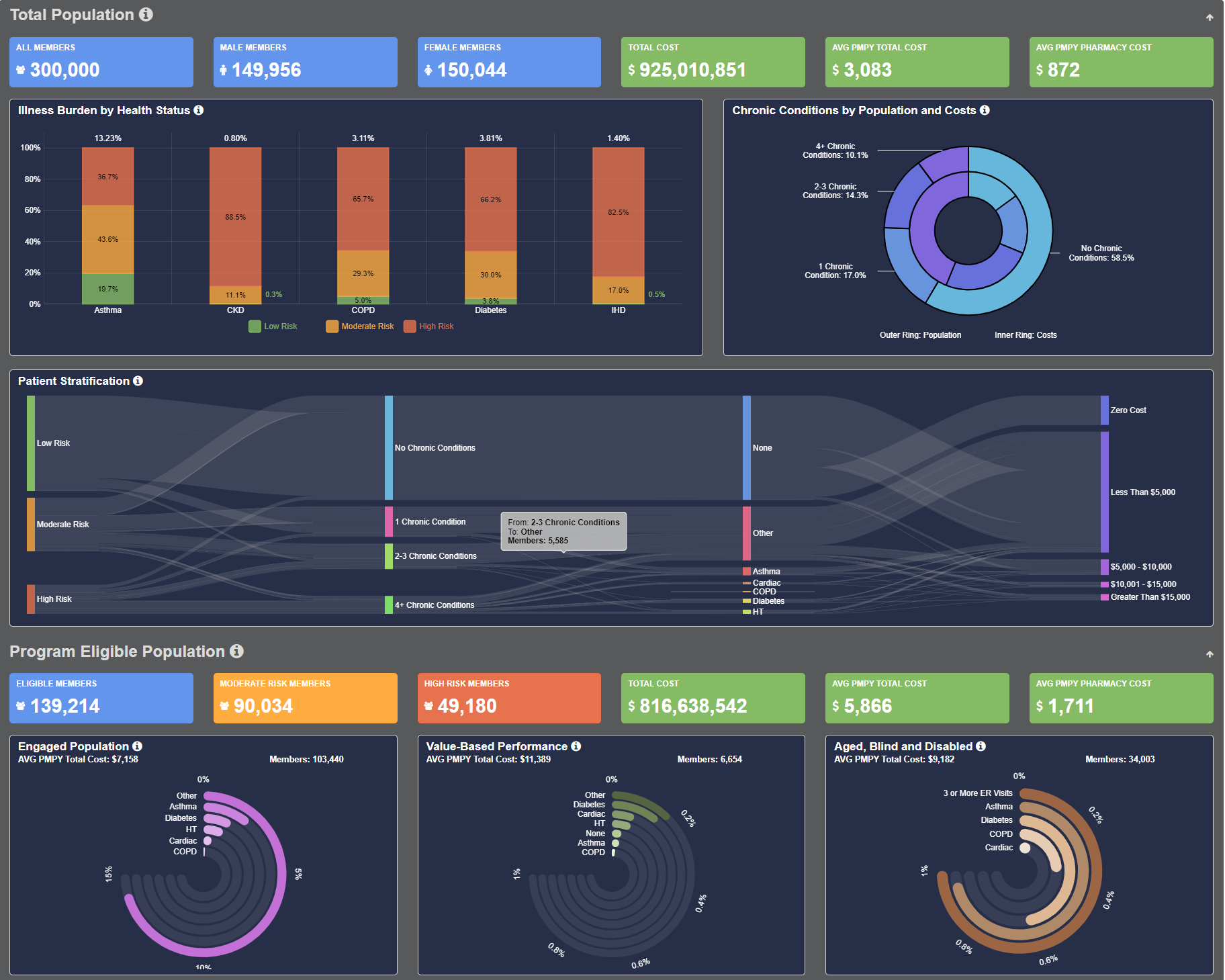 Healthcare Intelligence is a Telligen content series dedicated to exploring the latest trends, news and research across the entire spectrum of health and wellness.
Healthcare Intelligence is a Telligen content series dedicated to exploring the latest trends, news and research across the entire spectrum of health and wellness.
To enhance health outcomes, it is crucial to adopt a data-driven approach that helps determine where individuals’ position falls within the spectrum of health.
This position is commonly determined through risk stratification and classifying groups of individuals as high, medium, or low risk, painting a picture of those who are most vulnerable or in a health crisis to those with a chronic condition. Factors such as treatment compliance, social determinants of health, and claims data enable health care organizations to analyze and identify resources and interventions that have been shown to lower risk and lead to better health outcomes.
A Different Vantage Point
Intuitively, the data may point to interventions focused on the highest risk and highest cost individuals. Placing the focus on them is important; however, it may be a more comprehensive strategy to also look further upstream and identify individuals whose conditions put them in jeopardy of moving across the spectrum in risk and cost. The goal of this approach is to keep individuals from moving into the high-risk, high-cost bucket. For example, identifying and intervening with an individual with hypertension and obesity can prevent further debilitating strokes or heart attacks, which bring increased costs to the individual and their family. See the Innovation in Action section below for an example of how Telligen has found success with this strategy.
Tools such as population health analytics platforms can visually display where a population lands in terms of cost, chronic conditions, and risk, providing users the ability to identify key factors and strategies that will lead to better health outcomes.
Telligen’s proprietary population health management application, Qualitrac®, uses comprehensive data analysis to identify groups in a population that may benefit from additional resources or interventions. We’ve built a Spectrum of Health dashboard into Qualitrac to provide an interactive display of the selected population at the risk and cost level. This allows a user to drill down into the data at the individual level to view additional information such as co-morbidities and provider trends in care. This visual overview gives the user a pathway to identify what resources and interventions might work best for their population and if there are any nuances or trends in the data that might need attention.
Want to know more?
For more information on how Telligen is helping clients achieve better population health outcomes, visit our website to connect with one of our experts today.
Innovation in Action
At its core, risk stratification of a population across the healthcare spectrum turns data into information that can spur action for improving outcomes. For the Oklahoma Health Management Program (HMP), Telligen uses population health analytics tools in its proprietary system Qualitrac® to identify individuals that have or are at risk of developing a chronic condition that might benefit from care management.
SoonerCare Choice members are stratified into risk categories of Moderate, High and Highest Risk factors such as costs, the number and type of chronic conditions, opioid use, and ER and inpatient admissions frequency. This stratification, along with a health risk assessment, aids the team in identifying those who would benefit from health coaching. Once those individuals have been identified, a team of experienced health coaches and community resource navigators work in tandem to meet the needs of the members. Health coaches can provide care management support in various settings; clinic based, field-based, and telephonic. Community resource navigators prioritize securing appropriate resources to eliminate barriers caused by social determinants of health and improve their health outcomes.

